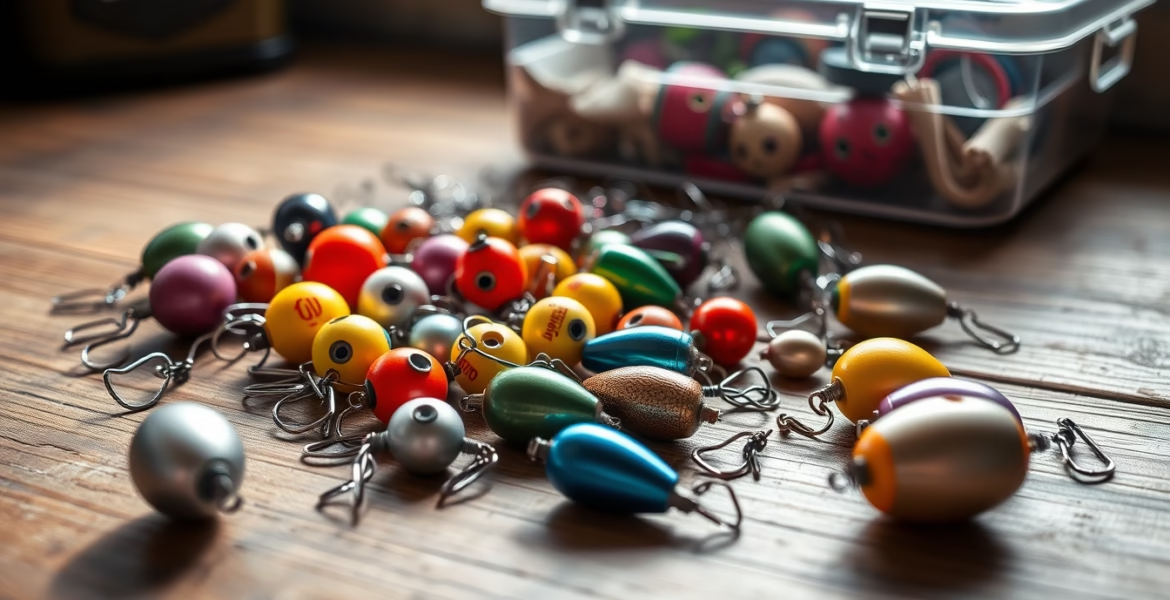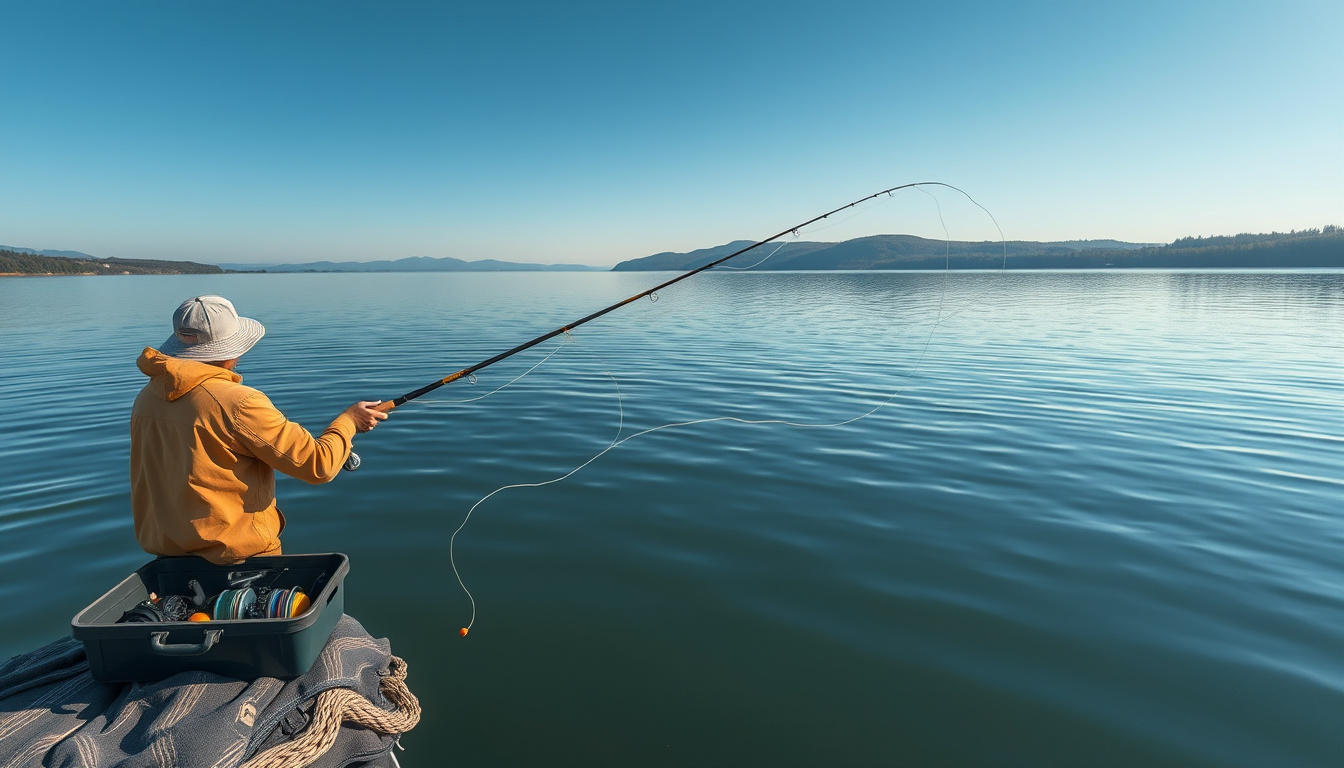
Fishingweights Guide: Choosing the Best Weights for Every Angler’s Trip
On July 13, 2025 by Andy FordFishingweights matter in every tackle box. They sit close to the line, help bait go where it must, and guide a good catch. You can use them on a pier, on a lake, or when fishing far out at sea. This guide shows you the types of fishingweights, how they work, and how to pick the right one for your trip.
Understanding Fishingweights and Their Importance
Fishingweights, or sinkers, join to the line and fix the bait at a chosen depth. They work by making the bait sink or stay steady against the current. Without good weights, your bait can drift out of reach or float at the wrong level, so close fish may pass by.
Anglers change the size, shape, and mass of these sinkers to guide bait moves. This helps target one kind of fish in one type of water. Fishingweights stay at the heart of a smart fishing trip.
Different Types of Fishingweights and Their Uses
Weights come in many shapes and sizes. Each works best in a clear water condition. Here are the common types:
1. Split Shot Weights
Split shots are small and round. They pinch the line tight. They are quick to put on and take off. These work best for soft bait moves.
Best for: Panfish, trout in still water, and small, careful casts.
2. Egg Sinkers
Egg sinkers look like an egg with a hole in the middle. The line slides right through. This stop twist and lets the bait move as it falls.
Best for: Bottom fishing in lakes and rivers, especially for catfish and bass.
3. Bullet Sinkers
Bullet sinkers hold a bullet shape. They slip past weeds easily. Bass anglers pick them when fishing near thick cover.
Best for: Fishing where weeds or rocks are many.
4. Bank Sinkers
Bank sinkers have a tear-drop shape and a loop at the top that holds the line. Their weight works well in strong water moves.
Best for: Surf fishing and areas with strong flow.
5. Pyramid Sinkers
Pyramid sinkers stand on a flat base with sharp spikes. They grip tight in sand or soft ground in moving water.
Best for: Surf fishing on sandy shores.
6. Inline Sinkers
Inline sinkers slide with the line to give fish a soft pull. They let the fish take bait with little strain.
Best for: Fishing on streams and small rivers.
Selecting the Right Fishingweights for Your Trip
Pick weights by looking at water depth, water flow, target fish, and your style. Here’s a simple way to choose:
1. Check Water Conditions
• Calm water: Try light weights such as split shots or small egg sinkers.
• Moving water: Use heavy weights like bank or pyramid sinkers to hold the bait.
2. Match Weight to Target Fish
• Small fish (like panfish or trout): Pick light weights so you do not scare them.
• Big fish (like bass or catfish): Heavy weights help the bait sink deep.
3. Match the Weight to How You Fish
• Bottom fishing: Choose heavy weights to keep bait on the ground.
• Drift fishing: Use egg or inline sinkers to let the bait float with the water.
• Long casts: Pick sleek bullet weights to lower air drag.
4. Try and Adjust
Every caster acts a bit different. Try a few weights until you find one that fits both your cast and the bait movement.
Step-by-Step Guide to Using Fishingweights
Follow these steps to get the best out of your fishingweights:
- Attach the weight onto your line by threading or clipping it in place.
- Add a swivel or leader after the weight to stop the line from twisting.
- Tie on your hook, bait, or lure below the weight.
- Cast your line and watch the bait move. Check if the bait drops the way you need it to.
- Swap weight sizes if the bait does not move as planned.
Usually, light weights show the bait more naturally. Sometimes, heavier weights are needed to reach fish in deep or fast water.

Environmental Considerations: Alternatives to Lead Fishingweights
Many weights have been made from lead. Lead is heavy and cheap. But lead can hurt wildlife if it falls on the earth. Many anglers now pick safe metal weights such as:
• Tungsten: Dense and safe for life.
• Steel: Strong and kind to the earth.
• Bismuth: A safe metal that works much like lead.
Safe metals keep fish and water pure and can work even better when you cast.
Frequently Asked Questions About Fishingweights
1. What size fishingweights should I use for freshwater fishing?
For freshwater and fish like bass and trout, try weights from 1/16 to 1/4 ounce. Change the weight if the water moves or is deep.
2. Can fishingweights affect bite ease?
Yes, heavy weights can dull the line feel. Light weights let the bait move more freely and help you sense small bites.
3. Are lead fishingweights safe to use?
Lead weights pose risks for nature. It is a smart choice to use safe metals like tungsten or steel.
Conclusion: Get the Right Fishingweights for a Good Trip
The right fishingweights make the move from an empty day to a busy fishing day. Know your water, the kind of fish you love, and your own style. Then, choose weights that match these needs. Also, pick nature-safe options to keep water clean and safe for tomorrow.
Getting ready to improve your fishing game? Explore our range of high-quality fishingweights today and find the perfect match for your next fishing trip!

Leave a Reply